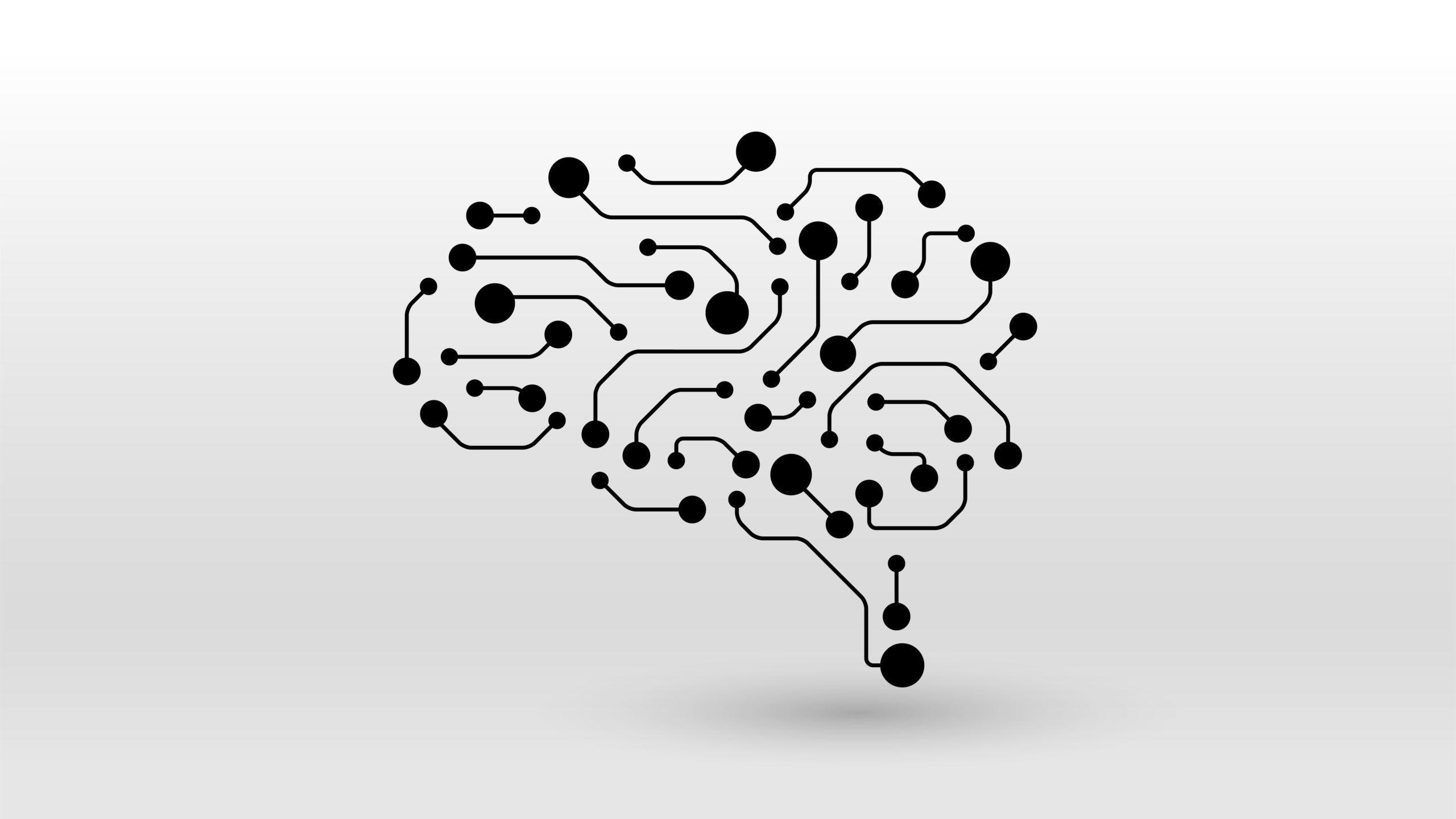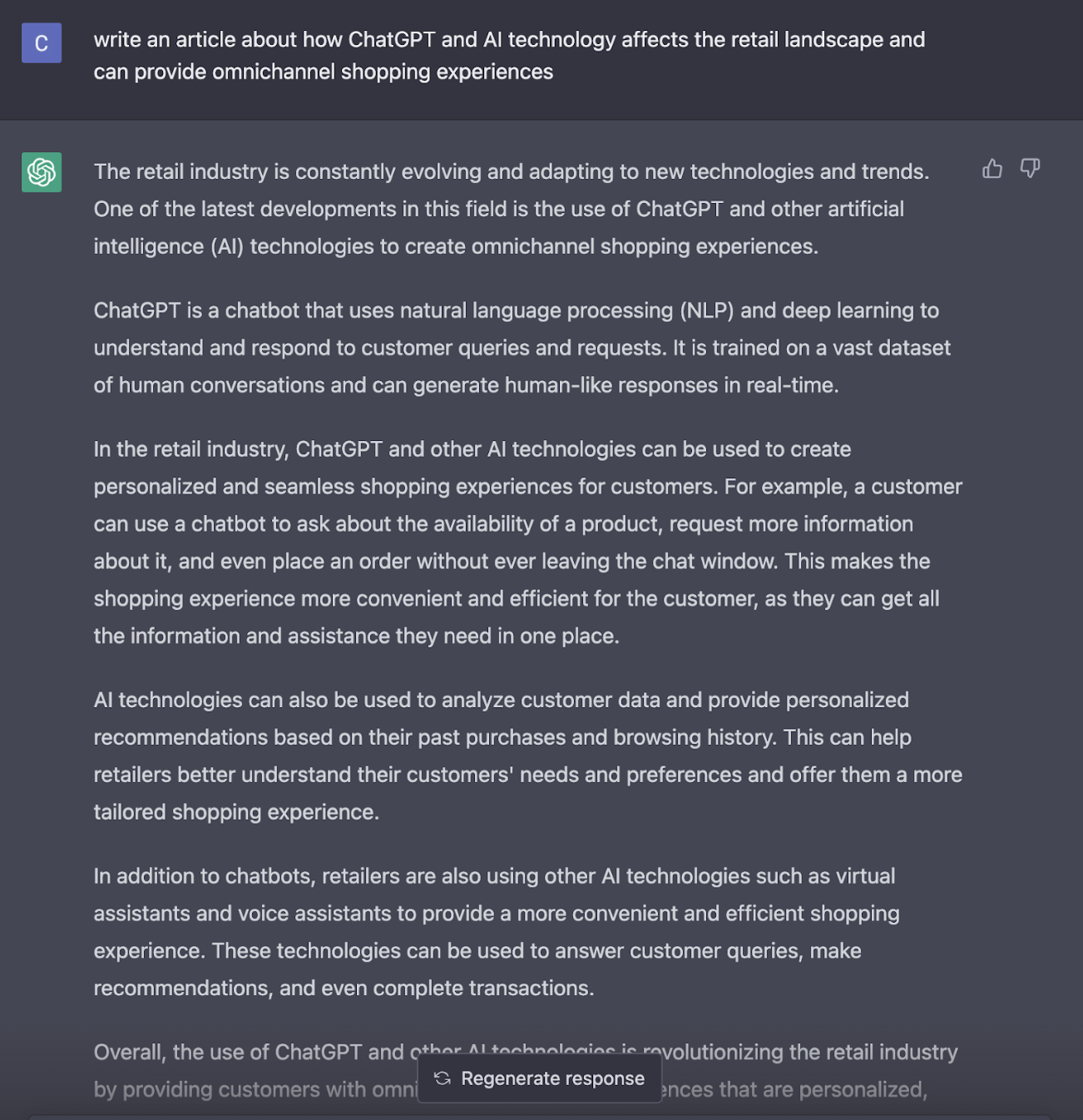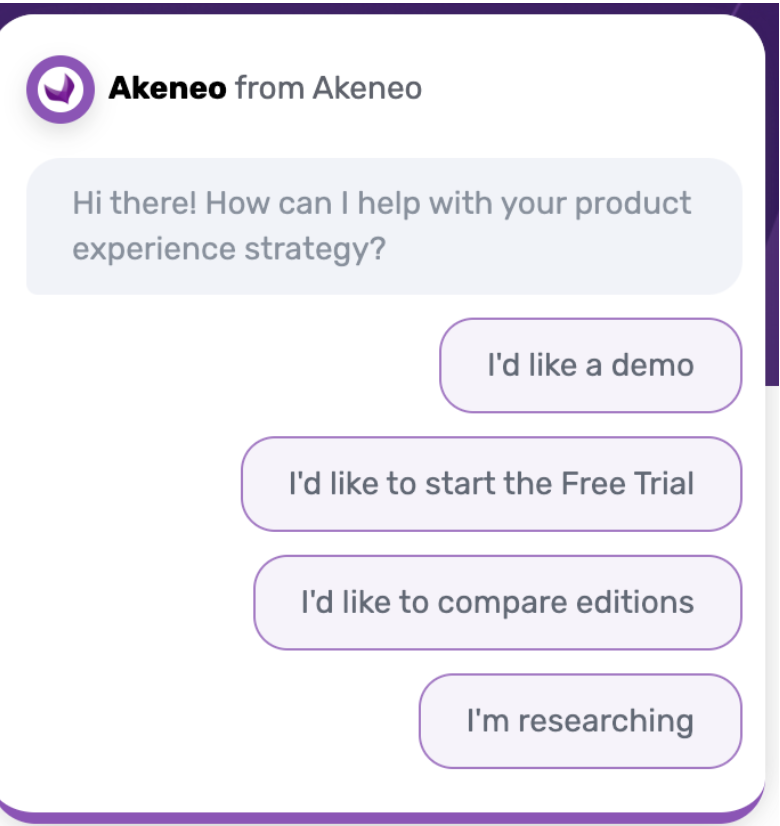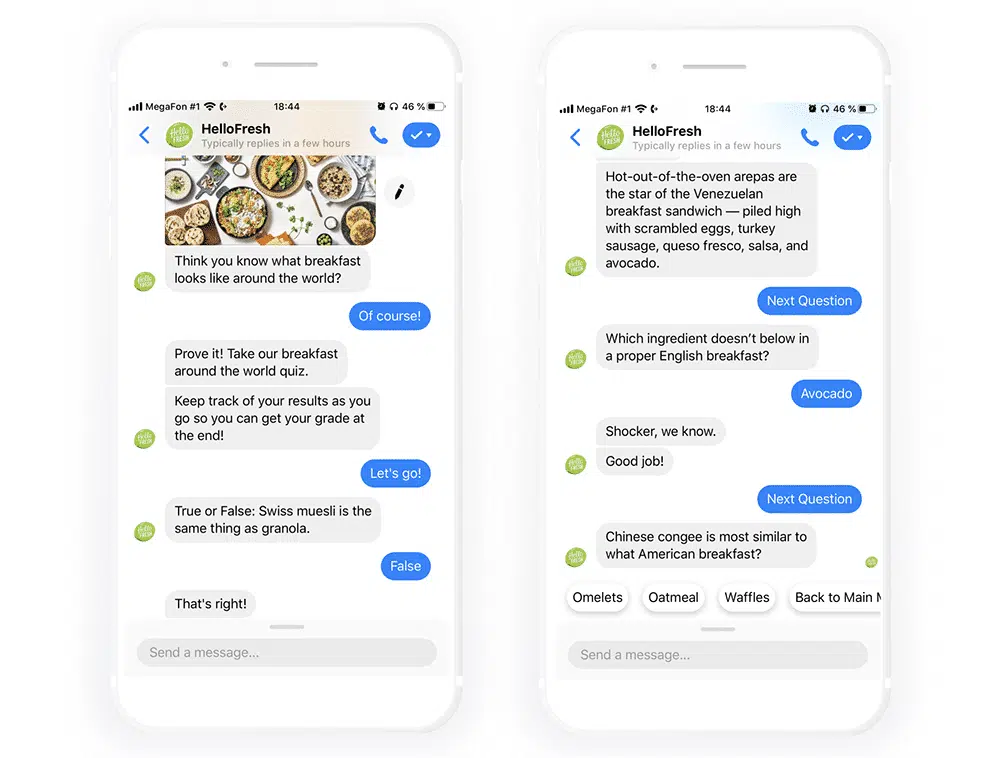ChatGPT is an exciting leap forward in artificial intelligence, but what does this innovative technology mean for the retail industry? And how can brands best utilize it to create compelling product experiences?

Keywords
ChatGPT is a powerful AI system that can understand and respond to human language that uses natural language processing (NLP) to understand and respond to customer queries and requests. This technology has the potential to revolutionize the way we shop online, making it easier and more convenient for customers to find and purchase the products they want.
In the retail industry, ChatGPT and other AI technologies can be used to analyze customer data and create personalized and seamless shopping experiences for customers. And it’s not just AI; retailers are also looking to other innovative technologies such as augmented reality, virtual reality, and voice assistants to provide a more convenient and efficient shopping experience. These technologies can be used to answer customer queries, make recommendations based on previous shopping behaviors, and even complete transactions.
Think this type of technological innovation is too far off in the future for practical, everyday use? Think again.
The introduction to this article was written entirely by ChatGPT, with only slight modifications.

The quality of ChatGPT’s language processing is lightyears beyond what had been available to the public previously, and should propel one thought to the forefront of everyone’s mind: innovative AI technology is not just coming down the road, but is here. And here to stay.
So with this immutable fact more apparent than ever, it’s time we take a look at how this affects the retail landscape and shopping behaviors, and what brands need to do to take effectively utilize groundbreaking technology to create omnichannel customer experiences (hint: it starts with your product information).
One of the best examples of AI technology already thriving today is the use of chatbots on retailer websites and social media platforms. Chatbots are growing faster than any other brand communication channel, seeing a usage increase of 92% between 2019 and 2020. Powered by AI technology like chatGPT, chatbots can provide personalized recommendations and assistance to customers based on their interests and preferences as they browse and shop online.

International meal delivery company, HelloFresh, does this well, utilizing AI technology to connect with and engage their customers. Meet Freddy, their chatbot that discusses eating preferences and new recipes with their users whenever it’s time to order a new box. They even provide quizzes and food-related questions, as well as recommend playlists that match the mood of the dish you’re creating.

As AI evolves and becomes smarter, more personalized recommendations can be made based on stronger analysis of customer behaviors and decisions. And chatbots can add a certain human element to this process by giving the feel of communicating with a real person.
Many brands and retailers are using AI to analyze customer data and create targeted advertising campaigns that are more likely to be successful. An eCommerce site can now use AI to analyze a customer’s previous purchases and browsing history, and then serve up ads for products that are similar or related to those items, providing a more bespoke shopping experience.
A great example of this is the behemoth itself, Amazon. Every time you log on to your homepage, one of the first things you see is a row of boxes, advertising items you’ve most recently clicked on, purchased, or shown interest in.

AI is not the only field of technology that’s made leaps and bounds over the past few years; Artificial Reality (AR) and Virtual Reality (VR) is similarly changing the retail landscape in a drastic way by allowing brands to provide a more immersive and interactive shopping experience than ever before.
With VR, customers can “try on” clothes and accessories without ever leaving their homes, and AR can be used to help customers visualize how products will look in their own homes before making a purchase. This can be especially useful for big-ticket items like furniture, where customers want to be sure they are making the right decision before committing to a purchase.
Swedish home goods manufacturer and retailer, IKEA does this extremely well; the IKEA Place App allows users to virtually place furniture items in their own homes and to see how the product will fit in the space.

This immersive experience provides a number of benefits to consumers; with a much better idea of the size, shape, and color of the item, customers are able to purchase with more confidence than ever before, resulting in reduced returns and satisfied, loyal customers.
In addition to these direct benefits for customers, Artificial Intelligence has the potential to streamline and improve the behind-the-scenes operations of brands and retailers. For example, AI can be used to analyze data on customer preferences and behavior to help retailers make better-informed decisions about inventory management and marketing.
Not to mention how this technology can be used to improve the efficiency and accuracy of warehouse and fulfillment operations. For example, some retailers are using AI-powered robots to sort and move products within their warehouses, which can help to reduce the time and effort required to fulfill orders. Similarly, shipping routes and delivery schedules can be optimized, which reduces costs and improves the overall efficiency of the supply chain.
So what do all of these retail experiences have in common, other than their use of advanced technology? They all require product information, reliable product information, in order to operate at the highest caliber.
Let’s go back to the HelloFresh example quickly; if the proper recipes aren’t tagged as “vegan”, then when a customer asks Freddy the chatbot for vegan recipes, then it’s going to be a disappointing experience when they get served up a beef stew recipe.
Or Amazon and their personalized, targeted ads. If they tracked that I’ve previously searched for “brush”, their product information management must be strong enough to differentiate between “hairbrush”, “toothbrush” and “pet hair brush” to ensure that they’re advertising the correct product.
The use of ChatGPT and other AI technologies is revolutionizing the retail industry by providing customers with omnichannel shopping experiences that are personalized, convenient, and efficient, and that’s exciting. But the big caveat is that your product information needs to be optimized and up-to-date before you can take full advantage of these advancements.
Colloquially, it’s a “shit-in, shit-out” situation; if you provide bad product data, it doesn’t matter how advanced the machine learning algorithm is or how advanced the technology has become. The product experience will fall short.
ChatGPT marks a bountiful leap forward when it comes to Artificial Intelligence, and demonstrates just how quickly and frequently the space is evolving. The organizations that are able to embrace this new wave of technology and build the foundation of product information to support it are the ones pushing the boundaries of innovation, with the highest profits and the most loyal customers.
And in case you were wondering, no. ChatGPT did not write this conclusion.
Looking to incorporate AI into your omnichannel product experience strategy, or just looking to take your first steps into centralizing product information? Reach out to an Akeneo expert today to see how we can help.

Explore how these 2025 Experience Award winners elevated product experiences by centralizing data, automating workflows, scaling globally, and...
Read more
Welcome to the digital shelf: the online space where products are discovered, evaluated, and purchased. Whether you’re aiming to boost visibility,...
Read more
As more brands are transitioning to Digital Product Passports (DPP), there are crucial steps that need to be taken to ensure that brands are...
Read more